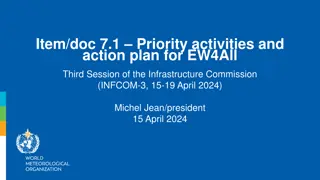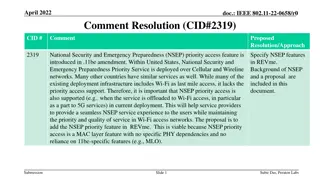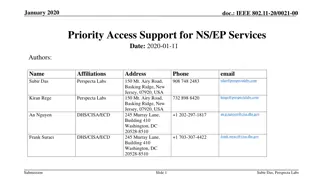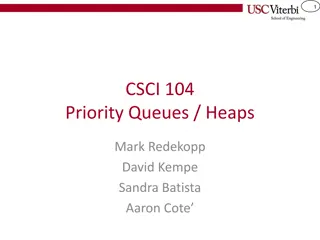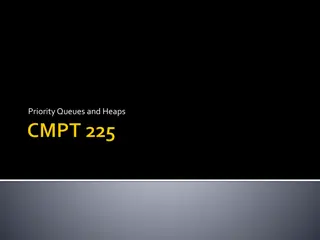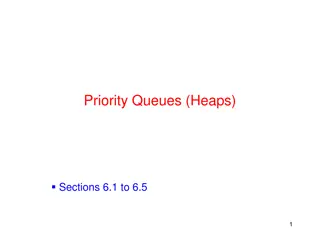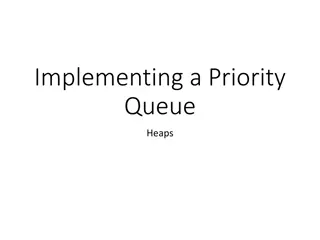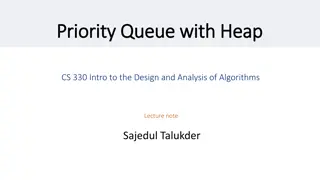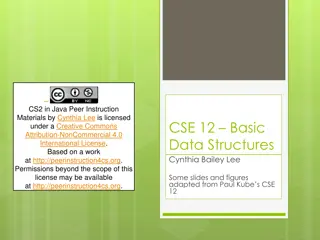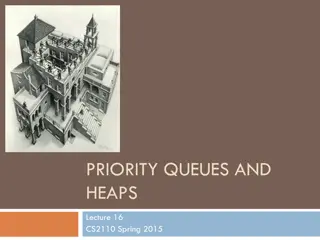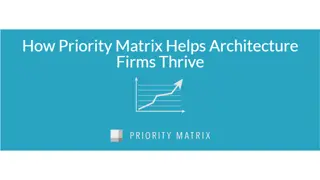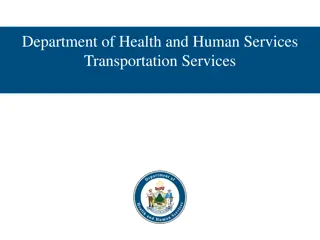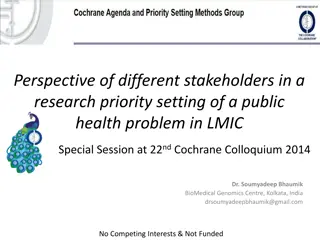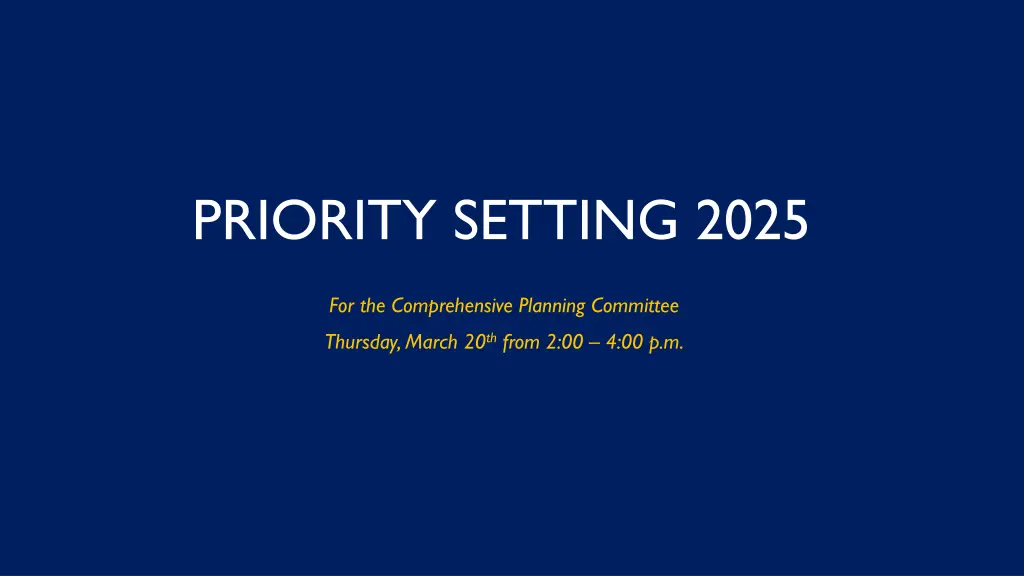
Comprehensive Planning Committee - Key Programs and Data 2021
Explore key programs and data for the Comprehensive Planning Committee meeting, including the Local Pharmaceutical Assistance Program, Mental Health Services, Medical Nutrition Therapy, and Substance Abuse Treatment. Gain insights on outreach, assessment, and treatment options available for clients living with HIV.
Download Presentation

Please find below an Image/Link to download the presentation.
The content on the website is provided AS IS for your information and personal use only. It may not be sold, licensed, or shared on other websites without obtaining consent from the author. If you encounter any issues during the download, it is possible that the publisher has removed the file from their server.
You are allowed to download the files provided on this website for personal or commercial use, subject to the condition that they are used lawfully. All files are the property of their respective owners.
The content on the website is provided AS IS for your information and personal use only. It may not be sold, licensed, or shared on other websites without obtaining consent from the author.
E N D
Presentation Transcript
PRIORITY SETTING 2025 For the Comprehensive Planning Committee Thursday, March 20thfrom 2:00 4:00 p.m.
LOCAL PHARMACEUTICAL ASSISTANCE Local Pharmaceutical Assistance Program (LPAP) is operated by RWHAP Part A as a supplemental means of providing ongoing medication assistance when an HRSA RWHAP ADAP has a restricted formulary, waiting list and/or restricted financial eligibility criteria. WORTH NOTING: Program Guidance: LPAP funds are not to be used for emergency or short-term financial assistance (this is for DEFA). Approximately 91% of RWHAP clients have insurance and about 51.8% are covered under Medicaid Recipients of LPAP funds must establish: Uniform benefits for all enrolled clients The Recipient has recently requested that all money be moved out of LPAP due to it being a duplicative service of EFA-Pharma Recordkeeping system for medications LPAP advisory board Distribution system Client enrollment and rescreening at least every 6 months Coordination with Part B ADAP Accordance with HRSA 340B requirements
MENTAL HEALTH 2021 Consumer Survey Data Mental Health Services are the provision of outpatient psychological and psychiatric screening, assessment, diagnosis, treatment, and counseling services offered to clients living with HIV. Services are based on a treatment plan, conducted in an outpatient group or individual session, and provided by a mental health professional licensed or authorized within the state to render such services. Such professionals typically include psychiatrists, psychologists, and licensed clinical social workers. Depression: 43.64% Anxiety: 43.64% PTSD: 13.14% 37.71% reported using mental health services 5.93% reported needing but not receiving this service WORTH NOTING PLWH are twice as likely to experience mental health conditions Viral suppression is lower in those with bipolar disorder and mental health multimorbidity
MEDICAL NUTRITION THERAPY 2021 Consumer Survey Data Key activities include: 6.78% reported needing but NOT receiving this service Nutrition assessment and screening 39.4% respondents reported high blood pressure Dietary/nutritional evaluation 30% respondents reported high cholesterol Food and/or nutritional supplements per medical provider s recommendation 13.5% respondents reported diabetes Nutrition education and/or counseling WORTH NOTING: Program Guidance: All activities under service must be pursuant to a medical provider s referral. Activities not provided by a registered/licensed dietician should be consider Psychosocial Support Services These activities can be provided in individual and/or group settings and outside of HIV Outpatient/Ambulatory Health Services. Over half (57.3%) of PLWH within the EMA are 50+ as of 2023 Nutritional Services were the least requested service for 2023 CSU Need at Intake
SUBSTANCE ABUSE TREATMENT (OUTPATIENT) 2021 Consumer Survey Data Key activities include: 2.9% needed but did NOT get the treatment Screening 20.76% used this service in the last 12 months Assessment 9.75% reported ever being diagnosed with substance use disorder Diagnosis, and/or Treatment of substance use disorder, including: Pretreatment/recovery readiness programs Harm reduction Behavioral health counseling associated with substance use disorder Outpatient drug-free treatment and counseling Medication assisted therapy Neuro-psychiatric pharmaceuticals Relapse prevention WORTH NOTING Program Guidance: Acupuncture therapy may be allowable under this service category if included in a documented plan Program Guidance: Syringe access services are allowable, though not syringes themselves Considering mode of transmission, PWID have the second highest rate of diagnosis 2024 is expected to see an increase in newly diagnosed PWID
EARLY INTERVENTION SERVICES WORTH NOTING EIS is the combination of services rather than stand-alone: Targeted HIV testing to help the unaware learn of their HIV status and receive referral to HIV care and treatment services if found to be living with HIV Referral services to improve HIV care and treatment services at key points of entry Access and linkage to HIV care and treatment services such as HIV Outpatient/Ambulatory Health Services, Medical Case Management, and Substance Abuse Care Outreach Services and Health Education/Risk Reduction related to HIV diagnosis HIV testing paid by EIS cannot supplant testing efforts paid by other sources 651 new diagnoses in the EMA in 2023 20% of individuals within the EMA were concurrently diagnosed with HIV/AIDS in 2023 In 2023 Philadelphia, there was a notable increase in HIV cases among the following populations: NH Asian people (+83%), people aged 13-24 (+20%), and MSM (+11%) Estimated that 91.6% of people are aware of their status within the EMA
HOME HEALTH CARE 2021 Consumer Survey Data Activities provided under Home Health Care must relate to the client s HIV disease and may include: 16% reported using the service in the last 12 months Administration of prescribed therapeutics (e.g. intravenous and aerosolized treatment, and parenteral feeding) 5.08% reported needing but not receiving in the last 12 months Preventive and specialty care WORTH NOTING Wound care Program Guidance: Limited to clients that are homebound; homebound does not include inpatient mental health / substance use treatment facilities Routine diagnostics testing administered in the home Other medical therapies According to 2023 CSU data, Home Health Care was the second least requested service May be a service with increased need as the population of PLWH ages, considering that over half of the EMA s PLWH are over 50 years old
HOME & COMMUNITY-BASED HEALTH SERVICES WORTH NOTING Key activities include: Over 50% of EMA s PLWH are 50+ Appropriate mental health, developmental, and rehabilitation services May be a service with increased need as the population of PLWH ages, considering that over half of the EMA s PLWH are over 50 years old Day treatment or other partial hospitalization services Durable medical equipment Home health aide services and personal care services in the home
HOSPICE SERVICES 2021 Consumer Survey Data Services are only accessible to clients in the terminal stage of an HIV-related illness. Allowable services are: 6.36% reported using the service in the last 12 months Mental health counseling 2.97% reported needing but not receiving in the last 12 months Nursing care Palliative therapeutics WORTH NOTING Physician services Program Guidance: May be provided in a home or other residential setting, including a non-acute care section of a hospital that has been designated and staffed to provide hospice services does NOT extend to skilled nursing facilities or nursing homes Room and board May be a service with increased need as the population of PLWH ages, considering that over half of the EMA s PLWH are over 50 years old
EMERGENCY FINANCIAL ASSISTANCE (EFA) 2021 Consumer Survey Data Emergency Financial Assistance provides limited one-time or short-term payments to assist an HRSA RWHAP client with an urgent need for essential items or services necessary to improve health outcomes, including: utilities, housing, food (including groceries and food vouchers), transportation, medication not covered by an AIDS Drug Assistance Program or AIDS Pharmaceutical Assistance, or another HRSA RWHAP-allowable cost needed to improve health outcomes. 24.15% reported using the service in the last 12 months 10.6% reported never having heard of this service WORTH NOTING Program Guidance: EFA funds are used to pay for otherwise allowable HRSA RWHAP services and must be accounted for under the EFA category. Direct cash payments are NOT permitted. EFA now covers security deposit In Philadelphia 2023, over 1/3 of households would not be able to comfortably afford the median monthly rent EFA must occur as a direct payment to an agency or through a voucher program. In 2023, 22% of individuals in Philadelphia lived below the poverty level For the 2023 NHBS cycle for transgender women 31% of respondents reported unstable housing 65% of respondents were living below the FPL
MEDICAL TRANSPORTATION 2021 Consumer Survey Data Medical Transportation is the provision of nonemergency transportation that enables an eligible client to access or be retained in core medical and support services. 29.7% of respondents reported transportation problems as the reason they missed a HIV medical appointment in the previous 12 months 36.44% reported using the service in the last 12 months 5.93% not needing this service Unallowable costs include: Direct cash payments or cash reimbursements to clients WORTH NOTING Program Guidance: Can be provided through: Provider contracts; Mileage reimbursements; Purchase/lease of organizational vehicles; Volunteer drivers; Vouchers and tokens Direct maintenance expenses (tires, repairs, etc.) of a privately-owned vehicle Any other costs associated with a privately- owned vehicle such as lease, loan payments, insurance, license, or registration fees. Second highest reported need at intake for CSU at 59.12% (2023) Limitations/Considerations: All trips classified as one-way Payer of last resort (must use ModivCare first)


